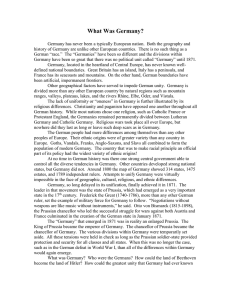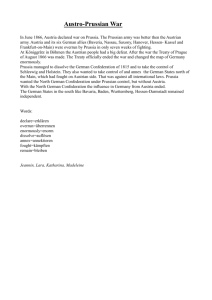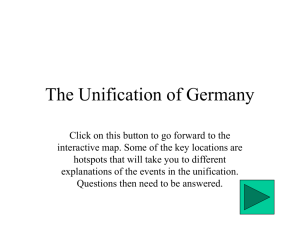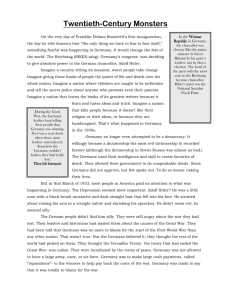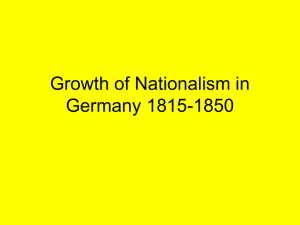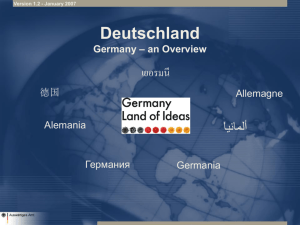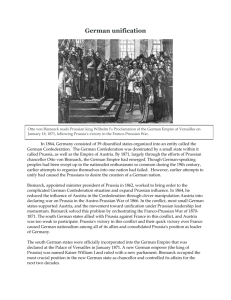9. What Was Germany?
advertisement
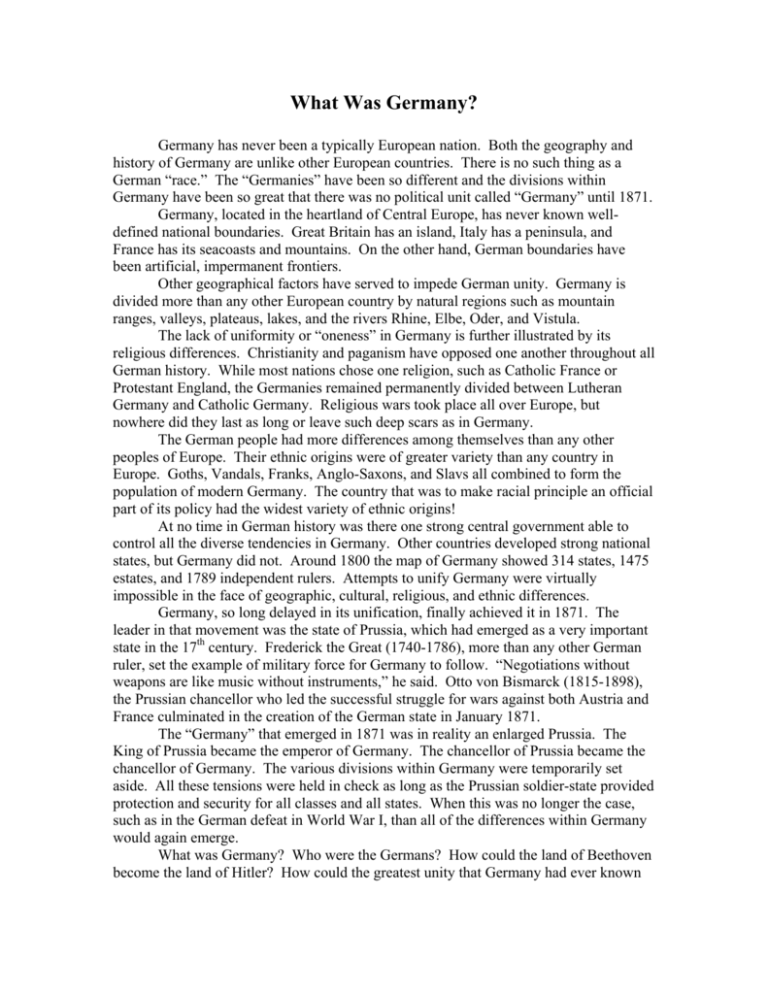
What Was Germany? Germany has never been a typically European nation. Both the geography and history of Germany are unlike other European countries. There is no such thing as a German “race.” The “Germanies” have been so different and the divisions within Germany have been so great that there was no political unit called “Germany” until 1871. Germany, located in the heartland of Central Europe, has never known welldefined national boundaries. Great Britain has an island, Italy has a peninsula, and France has its seacoasts and mountains. On the other hand, German boundaries have been artificial, impermanent frontiers. Other geographical factors have served to impede German unity. Germany is divided more than any other European country by natural regions such as mountain ranges, valleys, plateaus, lakes, and the rivers Rhine, Elbe, Oder, and Vistula. The lack of uniformity or “oneness” in Germany is further illustrated by its religious differences. Christianity and paganism have opposed one another throughout all German history. While most nations chose one religion, such as Catholic France or Protestant England, the Germanies remained permanently divided between Lutheran Germany and Catholic Germany. Religious wars took place all over Europe, but nowhere did they last as long or leave such deep scars as in Germany. The German people had more differences among themselves than any other peoples of Europe. Their ethnic origins were of greater variety than any country in Europe. Goths, Vandals, Franks, Anglo-Saxons, and Slavs all combined to form the population of modern Germany. The country that was to make racial principle an official part of its policy had the widest variety of ethnic origins! At no time in German history was there one strong central government able to control all the diverse tendencies in Germany. Other countries developed strong national states, but Germany did not. Around 1800 the map of Germany showed 314 states, 1475 estates, and 1789 independent rulers. Attempts to unify Germany were virtually impossible in the face of geographic, cultural, religious, and ethnic differences. Germany, so long delayed in its unification, finally achieved it in 1871. The leader in that movement was the state of Prussia, which had emerged as a very important state in the 17th century. Frederick the Great (1740-1786), more than any other German ruler, set the example of military force for Germany to follow. “Negotiations without weapons are like music without instruments,” he said. Otto von Bismarck (1815-1898), the Prussian chancellor who led the successful struggle for wars against both Austria and France culminated in the creation of the German state in January 1871. The “Germany” that emerged in 1871 was in reality an enlarged Prussia. The King of Prussia became the emperor of Germany. The chancellor of Prussia became the chancellor of Germany. The various divisions within Germany were temporarily set aside. All these tensions were held in check as long as the Prussian soldier-state provided protection and security for all classes and all states. When this was no longer the case, such as in the German defeat in World War I, than all of the differences within Germany would again emerge. What was Germany? Who were the Germans? How could the land of Beethoven become the land of Hitler? How could the greatest unity that Germany had ever known occur under Adolf Hitler? The dilemma that was Germany is illustrated in this quote by the British historian A. J. P. Taylor: The history of Germany is a history of extremes. . .”Germany” has meant at one moment a being so sentimental, so trusting, so pious, as to be too good for this world; and at another time a being so brutal, so unprincipled, so degraded, as to be not fit to live. Both descriptions are true; both types of Germans have existed not only at the same epoch, but in the same person.
